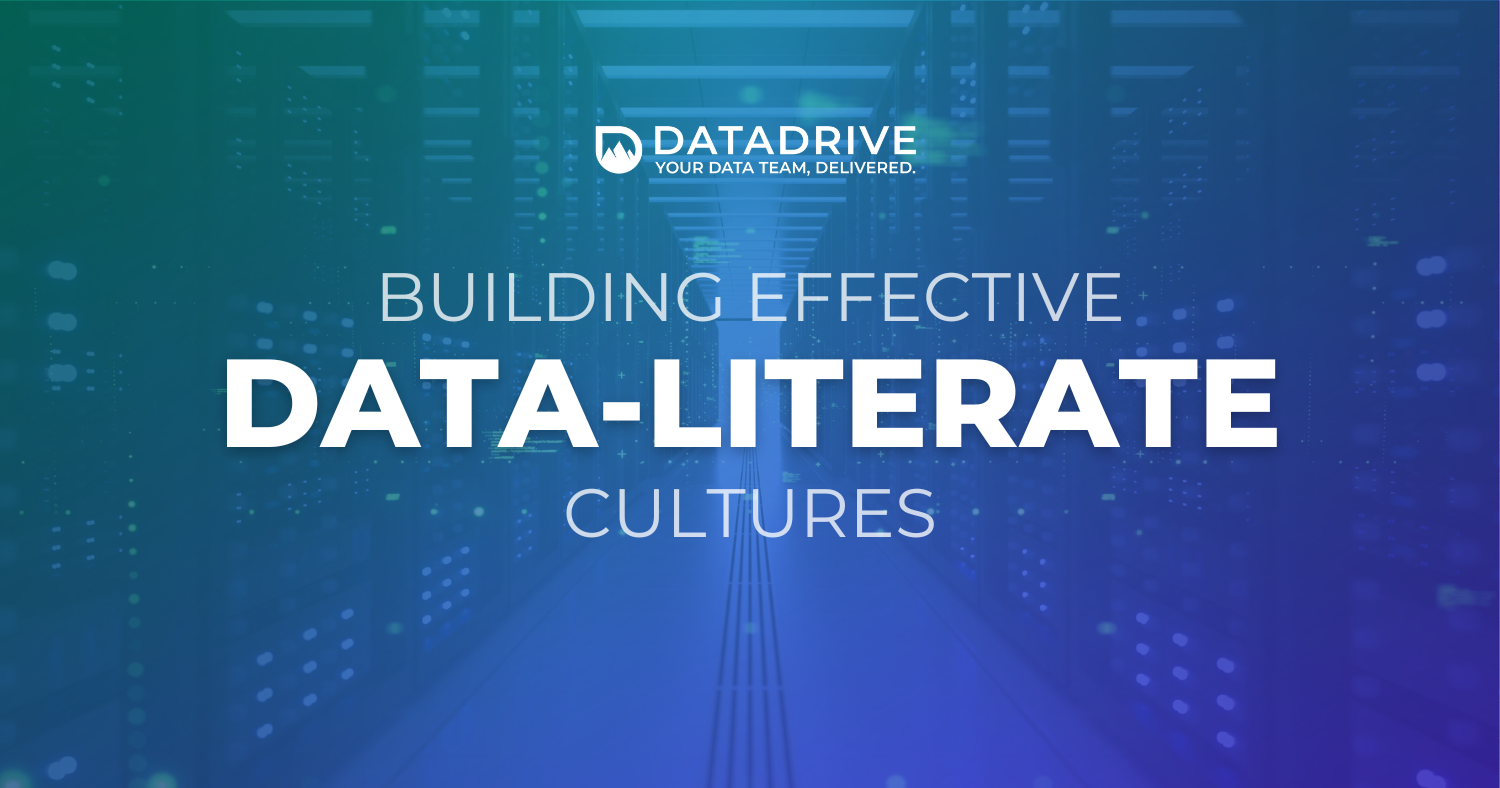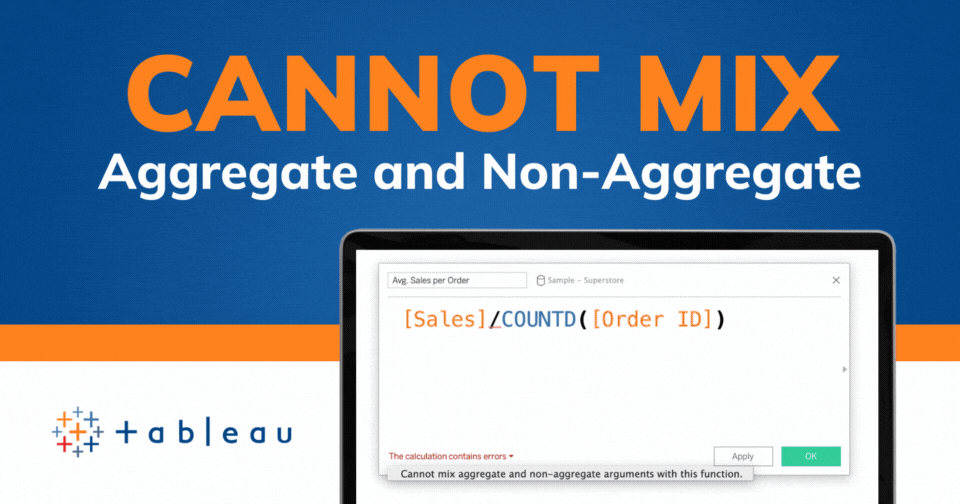Tableau Conference 2025 | Know Before You Go
If you’re a data enthusiast, analytics professional, or just someone curious about Tableau’s latest innovations, the Tableau Conference 2025 is your...

Data literacy is the ability to understand and work with data as a common source of information and insight. As data continues to play a large role in how organizations navigate rapidly changing markets, organizations must invest in improving data literacy within their teams. Here’s what it takes to build a data-driven culture.
Data literacy skills are essential for success in the world of modern business. Businesses now have access to more data than ever, but if they are unable to understand and interpret it, they will be unable to leverage their full potential.
Data is the new gold and the key to better decision-making, which is why organizations that promote data literacy can expect to achieve enormous gains in a constantly evolving and often unpredictable market.
Firstly, let’s start by explaining what data literacy isn’t.
One of the biggest barriers to adopting a data-driven company culture is the fact that many people think of data as a purely technical domain, which it isn’t. Data literacy isn’t the same thing as technical literacy, which refers to the ability to use a particular software application or other types of technology. Data isn’t a technology – it’s really just information in increasingly massive quantities.
Data literacy is the ability to read, analyze, and understand data in the quest to leverage it for desired business outcomes. Where literacy in general refers to the ability to derive information from the written word, data literacy is about deriving valuable insights from data. This requires a mix of both professional soft skills like critical thinking and more technical skills like the ability to read and understand charts and visualizations.
A data-literate person is better informed and able to make smarter decisions for the betterment of the business. Naturally, it’s a skill that applies to practically every knowledge worker in the world today. After all, everyone has (or should have) access to data to inform their day-to-day routines and decisions. For example, sales teams can use data to identify the most promising leads, while support teams can use data to identify recurring issues that take too long to solve.

Although today’s business leaders almost invariably recognize the importance of data, there’s still a significant divide between recognition and actual implementation. Almost two thirds of company executives would rather trust their gut instinct when making key decisions.
There are many possible reasons for this divide, but it’s very unlikely that a lack of data is one of them. After all, almost every business activity in today’s digital world generates data. The challenge lies in turning that data into actionable insight. Of course, that’s much more difficult when teams are drowning in spreadsheets and trying to make sense of hundreds of different data sources.
But it’s also not that businesses lack access to the tools they need to better manage their data and business intelligence (BI). The vast majority have the data, and many are in the process of implementing the tools needed to manage it, if they haven’t done so already. The source of the problem is often something deeper – company culture.
Tableau defines a data culture as a common set of behaviors and beliefs of people who value, practice, and encourage the use of data to drive informed decision-making. In a data-driven environment, employees don’t rely primarily on guesswork and gut instinct, but on the insights derived from increasingly massive data sets thanks to the use of modern analytics tools.
The first and most important thing to understand is that being data-driven doesn’t mean being a technologist. Data-driven decision-making isn’t the sole responsibility of the IT department or even a dedicated business intelligence team. Data literacy applies to everyone who makes decisions that impact the business, no matter how small or how large. Whether it’s a person in marketing wanting to make some small tweaks to a specific advertising campaign or a whole boardroom deciding on something as big as a merger or acquisition, data should play a central role in the decision-making process.
Leaders must lead by example by developing goals and objectives and following them closely in their own roles. IT teams must assume the responsibility to select, implement, and maintain the tools and technologies necessary for distilling big data into actionable, accessible insights that data-literate employees can make sense of.
It’s vital that employees have the tools and training resources they need to practice their data skills and become proficient in using data to make day-to-day decisions that are relevant to their individual roles. Managers should also track progress by regularly assessing how people throughout the business interpret basic statistical operations, such as judging averages and making correlations between data sets.
.gif?width=206&height=221&name=Insights%20powered%20by%20(2800%20%C3%97%203000%20px).gif)
The process of building a data-literate culture is, naturally, highly focused on end users, since they’re the ones who will be using data to make decisions. However, it’s also essential to build an environment in which data literacy can flourish. If you don’t overcome the barriers to data literacy first, then even the most comprehensive of training programs will fail to yield results.
Many of the barriers to data literacy are indeed technical. For example, a customer relationship management (CRM) database can degrade over time. Some customers may relocate, change their names, or simply cease to exist. In other words, the quality of data erodes over time, so it’s vital that you have the means to manage it proactively. Automation can go a long way to maintaining data quality by eliminating the need for manual data entry, while also ensuring the data retains the context it needs to remain relevant.
Arguably the biggest barrier to building a data-literate culture is the silo mentality, where teams don’t readily share information. This lack of collaboration is also a cultural problem, but one that’s usually born from a lack of integration between the tools used in different departments. Without data integration tools, it is difficult for teams to share essential information and, if that happens, there’s a much higher chance of inconsistencies between data sets as well.
Ultimately, building a data-literate culture requires close alignment between business leaders, who are responsible for the cultural element, and IT teams, who are responsible for building the technological framework necessary for transforming data into insights. With that alignment in place, businesses have the foundations they need to drive continuous improvement based on facts rather than emotions alone.
DataDrive is your managed workforce for data analytics. We combine our end-to-end Analytics Accelerator platform with domain-specific expertise to help you realize the full potential of your data.
-2.gif)
If you’re a data enthusiast, analytics professional, or just someone curious about Tableau’s latest innovations, the Tableau Conference 2025 is your...

Tableau Plus is the new premium offering from Tableau, a leading data visualization and business intelligence platform. It builds upon the...

If you've spent any time working with Tableau, you've likely encountered the dreaded "Cannot Mix Aggregate and Non-Aggregate Arguments" error. It's a...